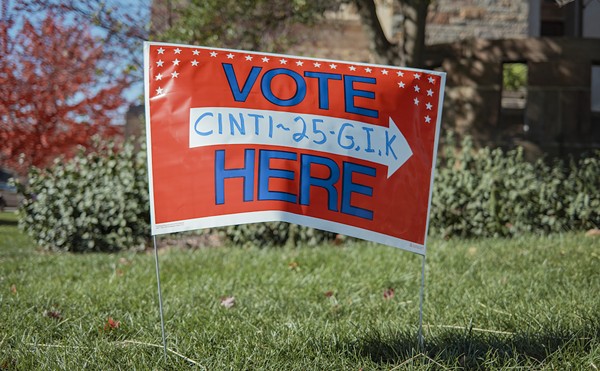In all the editorial skirmishing about electronic voting machines and their potential for everything from glitches to deliberate fraud, one alternative seems to have been overlooked: using open-source software.
Computer programmer Troy Davis — the founder and president of the Cincinnati Programmers' Guild and a programmer for Metaphor Studios — is so convinced that using open source software is the best way to ensure accurate and fair electronic voting, he might do it himself if nobody else will.
"I'd like to see somebody start up a company locally that is set up for the explicit purpose of selling open-source voting systems and maintaining them for the state," Davis says.
Open-source software, best exemplified by Linux operating systems, started with the premise that "the most eyeballs" equals the most security. For instance, Davis says that when Microsoft develops its newest version of Windows, at most a couple hundred people see it.
"By comparison, if you look at an open-source project like the next version of Linux, The Colonel, there are thousands of developers who work on that," Davis says.
Then it's posted on the Web.
"There are literally millions of people who can look at the source code," he says. "Pretty much all you need is Web access and a browser."
That means millions of eyes to spy potential weaknesses.
Closed-source operating systems such as Microsoft's, on the other hand, operate on the premise that if they don't reveal how it works nobody knows how it works.
"That concept is called 'security through obscurity' and it's highly ineffective, because it just takes one developer to spill the beans to somebody else and no amount of security will fix it," Davis says.
The proof is in the numbers, he says: The incidence of worms and viruses is much higher in Windows than Linux operating systems.
That's why Davis joined a global online community of programmers called the Open Voting Consortium (www.openvotingconsortium.org) working to develop open-source voting software.
Now is exactly the time to do it. The Help America Vote Act of 2002, which created the provisional ballot, provided funding to election boards to upgrade their voting machines by 2006. The vast majority of Ohio county boards of elections defied Secretary of State Ken Blackwell's recommendation to purchase Diebold computer systems, going instead with paper ballots for this year's election.
So what do the Open Voting Consortium's computer whizzes think about the electronic voting that did occur?
"The consensus seems to be that the opportunity (for fraud) was certainly there if somebody wanted to take advantage of it," Davis says. "And one of the biggest problems is that the companies that manufacture the voting machines currently — Diebold, ES&S and Sequoia — all apparently have connections to politicians of one particular party but not of another."
At the same time, the Open Voting Consortium believes that the overwhelming majority of vote fraud has more to do with assistance from election officials such as Blackwell, who chaired Ohio's Bush/Cheney campaign, and the president of Diebold, who publicly promised to deliver Ohio for Bush.
The obstacles to implementing open-source voting systems are steep but not insurmountable, according to Davis. Those who run the closed-source voting machine companies and those who benefit by them will naturally resist.
"The big question in my mind is, can an alternative to the three Republican voting companies be set up and authorized prior to that deadline in order to offer an alternative to those counties?" Davis says.
All The News That Fits: Leads, entrails and tales we couldn't get to.





